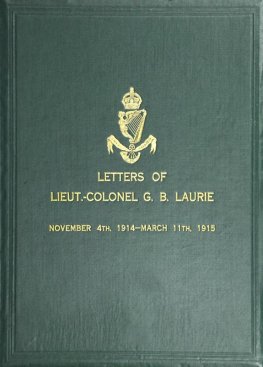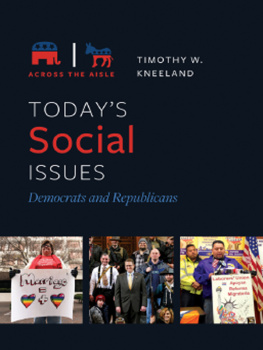Commercialized Prostitution
in New York City
Publications of the Bureau of Social Hygiene
Commercialized Prostitution
in New York City
BY
GEORGE J. KNEELAND
With a supplementary chapter by
KATHARINE BEMENT DAVIS
Superintendent of the New York State Reformatory for Women
INTRODUCTION BY
JOHN D. ROCKEFELLER, Jr.
Chairman of the Bureau of Social Hygiene
NEW YORK
THE CENTURY CO.
1913
Copyright, 1913, by
The Century Co.
Published, May, 1913
CONTENTS
| CHAPTER | PAGE |
| Introduction |
| Vice Resorts in New York City: (a) Parlor Houses |
| Vice Resorts: (b) Tenement Houses, Hotels, Furnished Rooms, Massage Parlors |
| Places Which Cater to Vice |
| The Exploiters |
| Prostitute and Customer |
| The Business of Prostitution; Its Cost |
| Prostitution, the Police, and the Law |
A Study of Prostitutes Committed from New York City to the State
Reformatory for Women at Bedford Hills |
| Statistical Tables Accompanying Chapter VIII |
| Preventative, Reformative and Correctional Agencies in New York City |
| Appendices |
| Index |
INTRODUCTION
In presenting to the public this volume, the first of four studies dealing with various aspects of the problem of prostitution, it seems fitting to make a statement with reference to the origin, work and plans of the Bureau of Social Hygiene.
The Bureau came into existence about two years ago, as a result of the work of the Special Grand jury which investigated the white slave traffic in New York City during the first half of the year 1910. One of the recommendations made by the jury in the presentment handed up at the termination of its labors was that a public commission be appointed to study the social evil. The foreman of the jury subsequently gave careful consideration to the character of the work which might properly be done by such a commission and the limitations under which it would operate. In this connection, separate personal conferences were held with over a hundred leading men and women in the city, among whom were lawyers, physicians, business men, bank presidents, presidents of commercial organizations, clergymen, settlement workers, social workers, labor leaders and reformers. These conferences led to the conclusion that a public commission would labor under a number of disadvantages, such as the fact that it would be short-lived; that its work would be done publicly; that at best it could hardly do more than present recommendations. It was also believed that the main reason why more results of a permanent character had not been obtained by the various organizations which had dealt with the subject of the social evil during the past ten or fifteen years was that most of these organizations were temporary. While active, they materially improved the situation, but as their efforts relaxed, there came the inevitable return to much the same conditions as before. The forces of evil are never greatly alarmed at the organization of investigating or reform bodies, for they know that these are generally composed of busy people, who cannot turn aside from their own affairs for any great length of time to carry on reforms, and that sooner or later their efforts will cease and the patient denizens of the underworld and their exploiters can then reappear and continue as before.
So the conviction grew that in order to make a real and lasting improvement in conditions, a permanent organization should be created, the existence of which would not be dependent upon a temporary wave of reform nor upon the life of any man or group of men, but which would go on, generation after generation, continuously making warfare against the forces of evil. It also appeared that a private organization would have, among other advantages, a certain freedom from publicity and from political bias, which a publicly appointed commission could not easily avoid.
Therefore, as the initial step, the Bureau of Social Hygiene was formed in the winter of 1911. Its present members are Miss Katharine Bement Davis, Superintendent of the New York State Reformatory for Women at Bedford Hills, New York; Paul M. Warburg, of the firm of Kuhn, Loeb & Company; Starr J. Murphy, of the New York Bar; and John D. Rockefeller, Jr. As the work develops, new members may be added.
One of the first things undertaken by the Bureau was the establishment at Bedford Hills, adjacent to the Reformatory, of a Laboratory of Social Hygiene, under Miss Daviss direction. In this laboratory, it is proposed to study from the physical, mental, social and moral sides each person committed to the Reformatory. This study will be carried on by experts and every case will be kept under observation for from three weeks to three months, as may be required. When the diagnosis is completed, it is hoped that the laboratory will be in position to suggest the treatment most likely to reform the individual, or, if reformation is impossible, to recommend permanent custodial care. Furthermore, reaching out beyond the individuals involved, it is believed that important contributions may be made to our knowledge of the conditions ultimately responsible for vice, and that the methods worked out may prove applicable to all classes of criminals, thus leading to lines of action not only more scientific and humane but also less wasteful than those at present followed.
In entering upon its labors, the Bureau regarded it of fundamental importance to make a careful study of the social evil in this country and in Europe. This problem, like any other great and difficult one, can be approached only through an understanding of the various factors involvedphysical, moral, social and economicand of the experience of other cities and countries in dealing with it. Arrangements were therefore made in January, 1912, to secure the services of Mr. George J. Kneeland, who had directed the Chicago Vice Commission investigation. Since that time Mr. Kneeland, with a corps of assistants, has been making a thorough and comprehensive survey of the conditions of vice in New York City, the findings of which are here presented.
The purpose of this volume is to set forth as accurately and fully as possible the conditions of vice as they existed in New York City during the year 1912. It should be clearly understood that the data upon which it is based are not presented as legal evidence, but as reliable information secured by careful and experienced investigators, whose work was systematically corroborated.
In presenting the facts contained in this report, the Bureau has no thought of criticizing any department or official of the city administration. The task which the Bureau set itself was that of preparing a dispassionate, objective account of things as they were during the period above mentioned, the forms which commercialized vice had assumed, the methods by which it was carried on, the whole network of relations which had been elaborated below the surface of society. The studies involved were made in a spirit of scientific inquiry, and it is the hope of the Bureau that all departments or officials whose work this book in any way touches may find the information therein contained helpful to them in the further direction and organization of their work.
The Bureau also secured the services of Mr. Abraham Flexner, whose reports on the medical schools in this country and in Europe are well known, to study the social evil and the various methods of dealing with it in the leading cities of Europe. Mr. Flexner spent the greater part of a year abroad, making a searching and exhaustive inquiry into the subject, and is now working on his report, entitled Prostitution in Europe, which will be the second volume of the series, to be published in the fall.












